Eusebio Leal: The man who saved Old Havana from decay
- Published
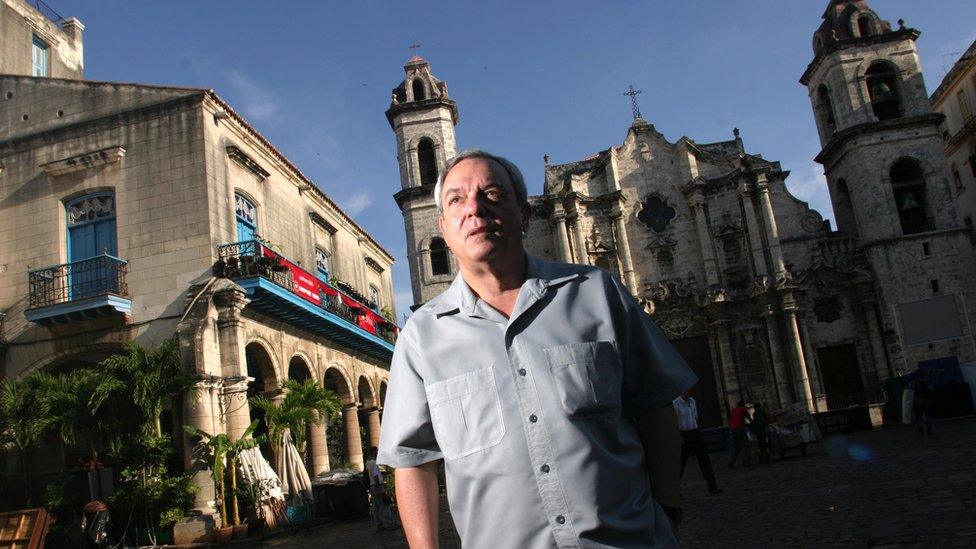
Eusebio Leal was sometimes known as "The Grey Man" for the distinctive loose-fitting grey suits he wore as he walked the streets of Old Havana.
Others called him Havana's "eternal boyfriend" for his total commitment to saving the city from disrepair and decay.
But to most Cubans he was "el historiador" in reference to his job title of official historian of Havana, a role he was promoted to by the late Cuban leader, Fidel Castro, in 1967.
Lifetime project
To Eusebio Leal it was more than just a job. It was his whole life.
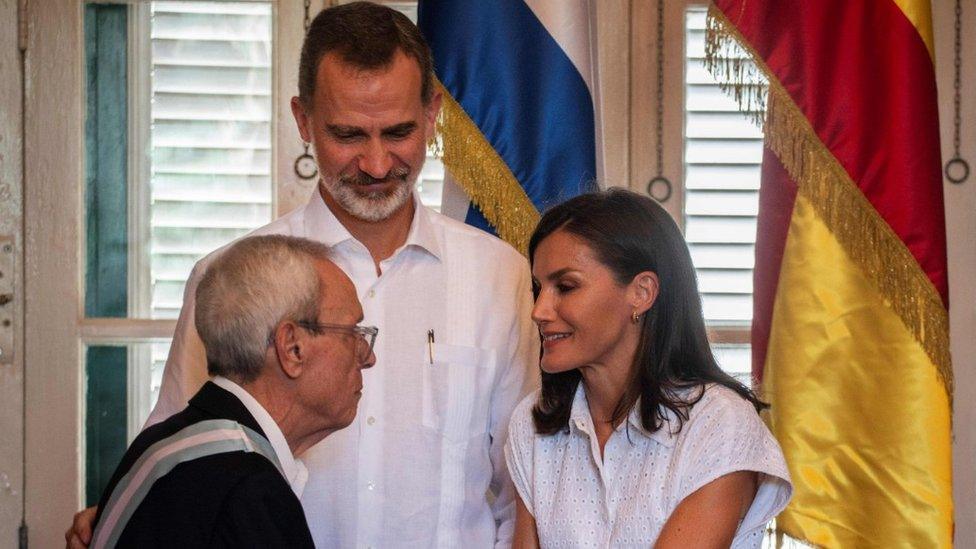
Last year, Eusebio Leal was awarded the Grand Cross of the Royal and Distinguished Spanish Order of Carlos III by Spain's King Felipe
For decades, he battled to preserve Havana from the ravages of sea-spray, sun and torrential rain. "When a building collapses anywhere in this city, it takes with it a piece of my heart," he told me in late 2016.
When the much-loved city planner died last month after a long illness, Cuban state television interrupted its normal programming to announce his death.
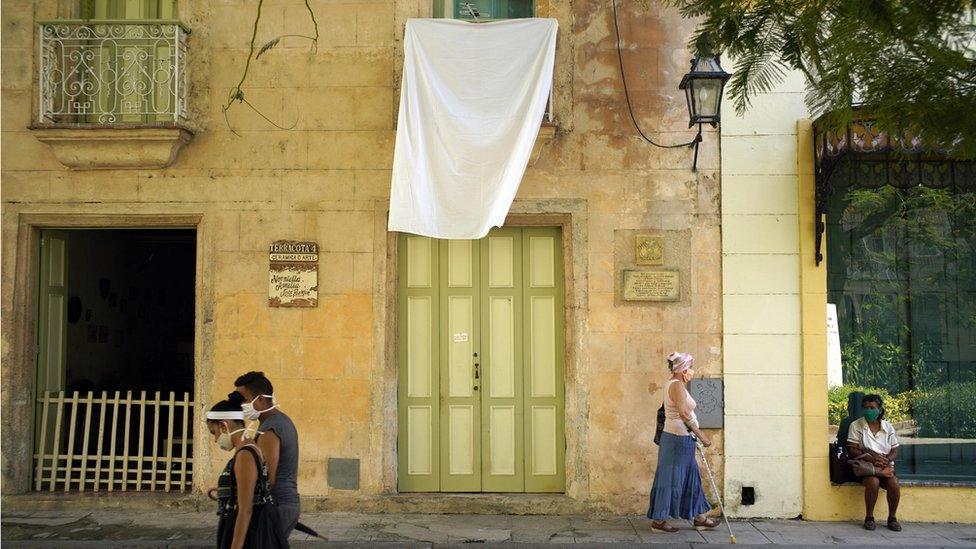
Cubans hung white bedsheets out of their windows as a tribute to Eusebio Leal after his death
Over mournful music, they showed Eusebio Leal standing outside the Capitolio, the grandiose 1920s parliament building and site of arguably his greatest conservation work.
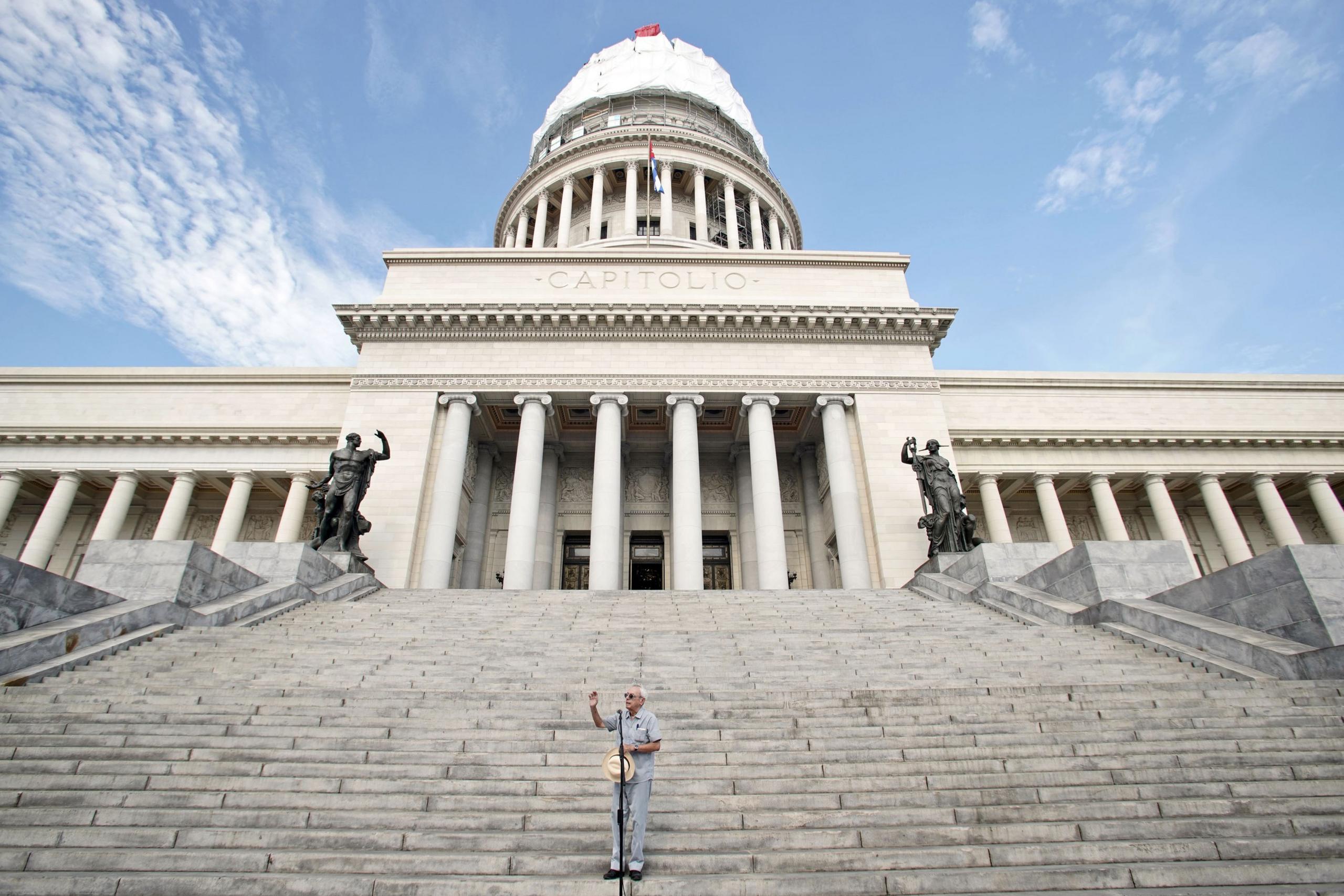
A few years ago, I was given a guided tour as Leal's team painstakingly restored the building to its former glory.
The Hall of Lost Steps, which linked the main chambers, was resplendent as its marble arches and original gold-leaf fittings were readied ahead of the 500th anniversary of Havana.
Such projects did not come cheap, especially given Cuba's twin problems of chronic underinvestment and a decades-long US economic embargo.
"Restoration costs money, money and more money," he said. "It's like the national sport for decaying countries."
Source of funds
So, Eusebio Leal created a network of state-owned hotels and restaurants called Habaguanex which generated the necessary funds for the city's restoration. In August 2016, control of Habaguanex passed to the Cuban military.
Although Dr Leal denied he had been the subject of some kind of coup, it did undoubtedly change his once-unassailable autonomy.
Few, if any, in Havana spoke ill of the man.
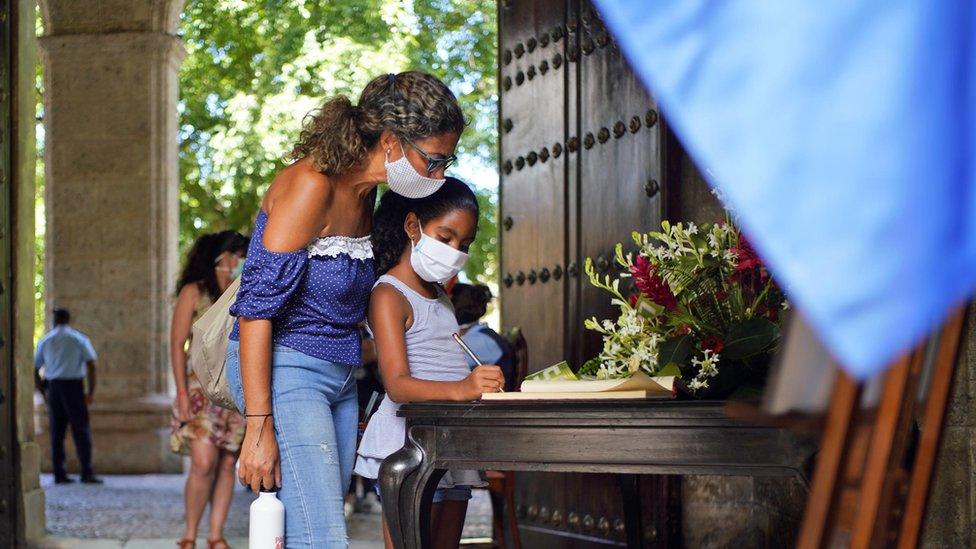
Residents of Havana queued to sign the condolences book for Eusebio Leal

But one of the criticisms levelled at his empire was that the conservation work was overly-dependent on just one man. Old Havana is a Unesco World Heritage site and some parts of it have received great recognition for their beauty. Others are on the verge of crumbling into the sea.
It is a short walk from the Capitolio to the Plaza de Cristo.
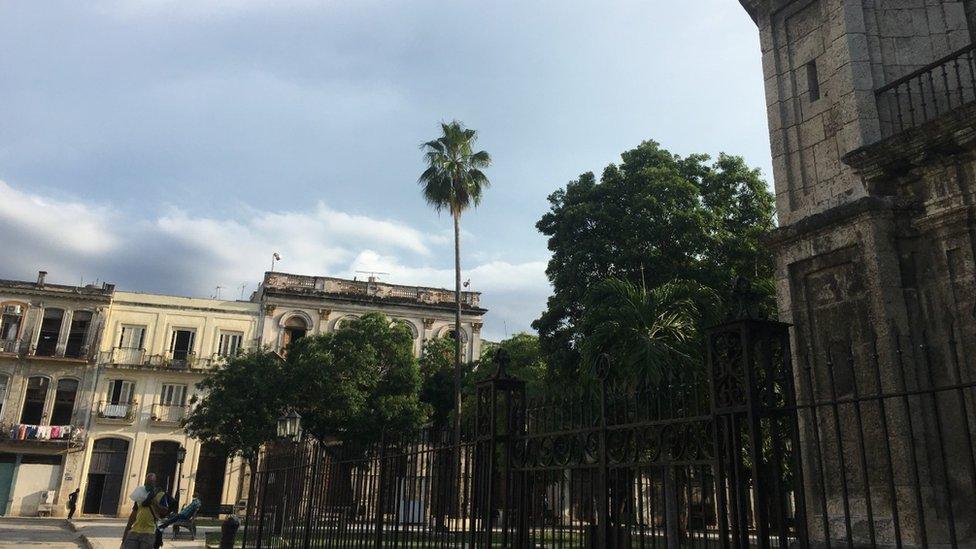
One of five squares in Old Havana to be restored by the City Historian's office, the Plaza de Cristo never received the same meticulous attention to detail as the other four.
Many of the surrounding buildings are in a precarious state and some of the balconies look like they would struggle to survive one more tropical downpour, let alone a hurricane.
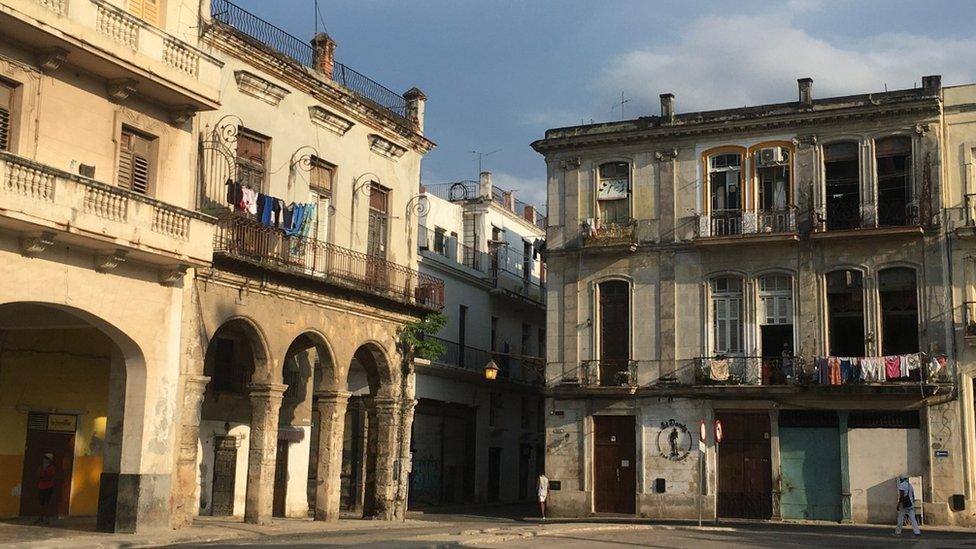
A friend of mine, Carmen Maria, lives in one such building called a solar, a ramshackle open-roofed space which houses several families in the rooms leading off a central staircase.
Many solares in Old Havana are in poor shape and the families inside have spent years hoping for either the state to restore them or for private individuals to buy them out.
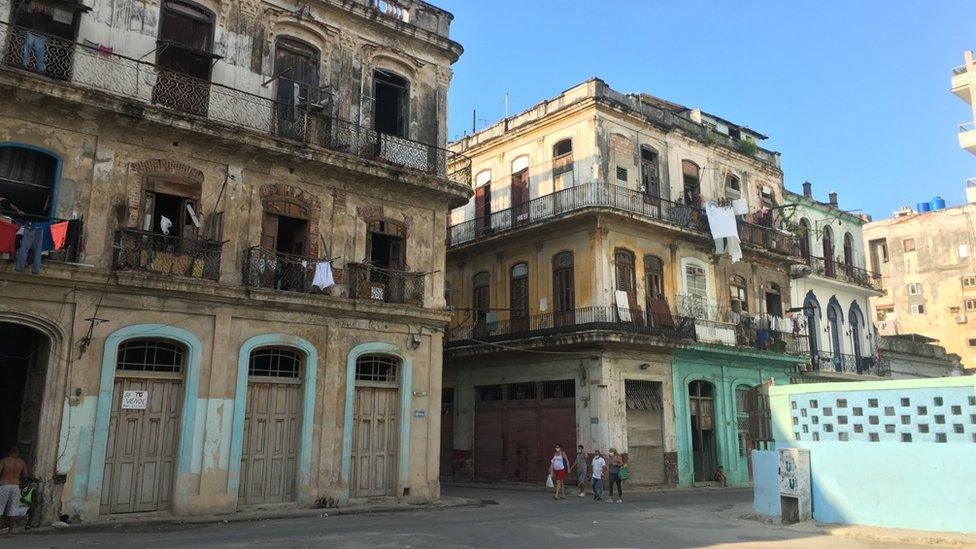
Carmen Maria, a retired teacher in her sixties, recently sent a letter to Eusebio Leal explaining her living conditions. His answer, in a hand-delivered letter, arrived the day before he died.
Dr Leal told Carmen he was aware of her situation but that, given his own ill-health, there was nothing more he could do for now. Carmen was deeply touched that he wrote back despite his illness and believes the historic centre will be far worse off without him.
"When I heard he'd died, I said in tears 'Old Havana is finished'", she told me at her kitchen table.
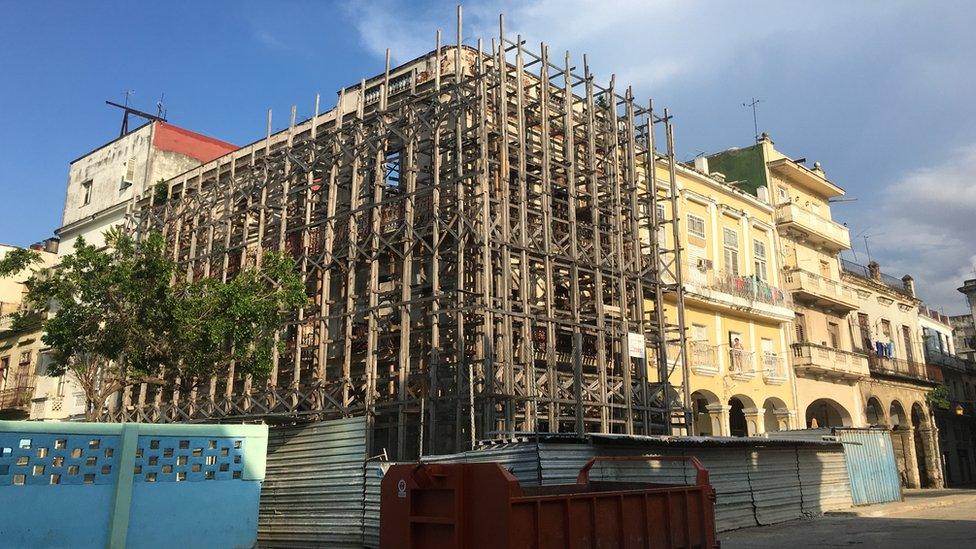
"Perhaps I'm being too pessimistic or I'm failing to acknowledge qualities in those that trained at his side. But I don't think his humanity and his sensibility to see beyond the decay can be taught. He was born with it."
When we spoke in 2016, Eusebio Leal admitted that private capital would play an increasingly important role in Havana's restoration. "When we hear of people buying up old buildings and restoring them in keeping with the original blueprints, then I'm happy and I applaud that."
Nelson Rodriguez did exactly that. The owner of El Café in Calle Amargura, his private business retained all of the building's features in keeping with Dr Leal's wishes.
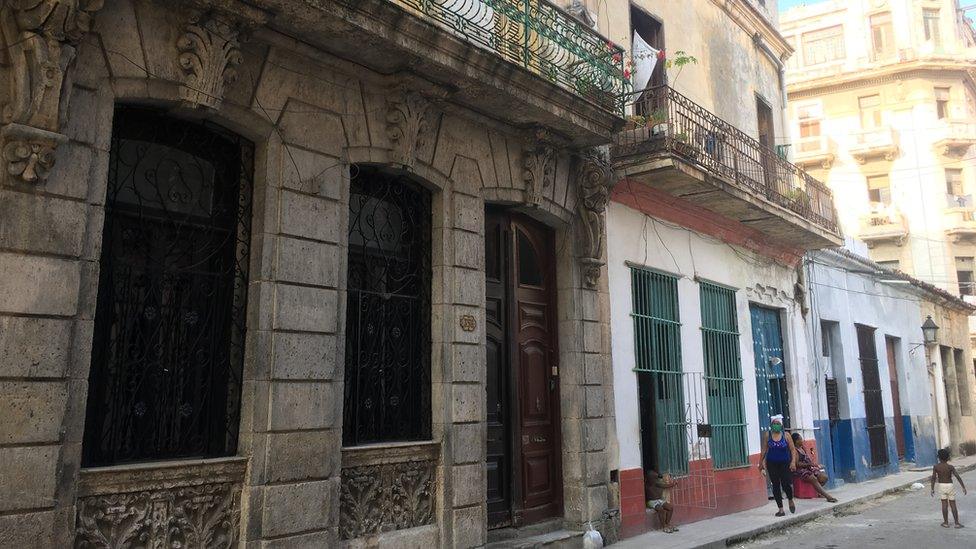
"It's not happening with the speed we hoped for," remarks Nelson, "but little by little, Old Havana will be restored this way."
Eusebio Leal, modest to the end, must have felt quiet satisfaction as the fireworks exploded over the city on its 500th anniversary last November. His works were completed against the odds and on time.
An oft-told story about him was that he once lay down in front of the steamrollers to prevent an original street surface from being tarmacked over. Residents of Havana hope his eventual successor will show the same commitment to salvaging their city.
All pictures subject to copyright.
- Published18 November 2019